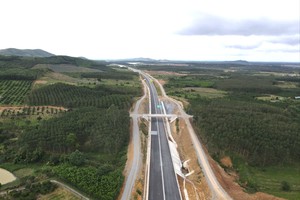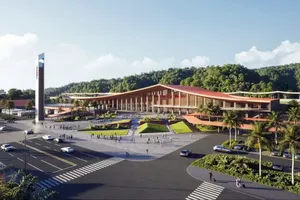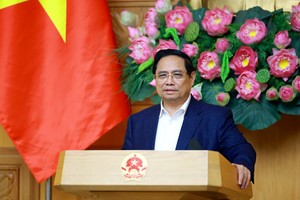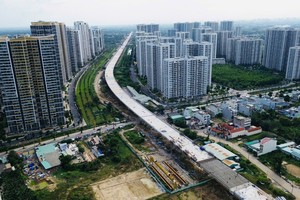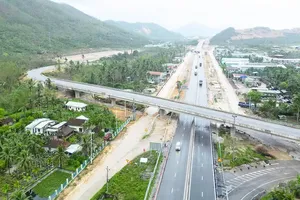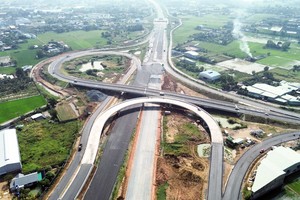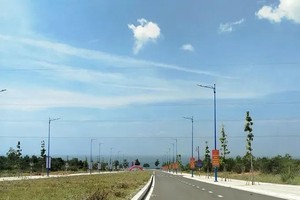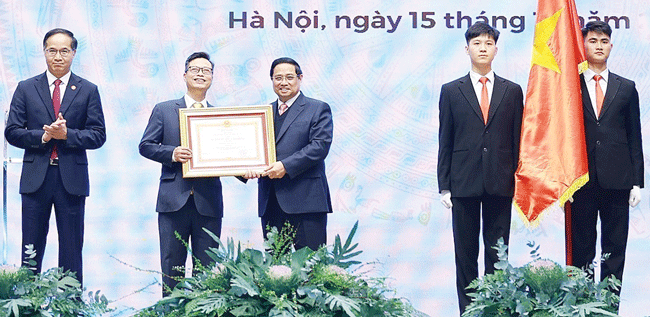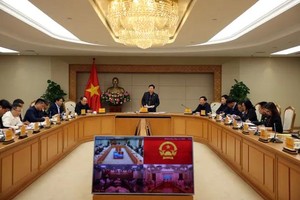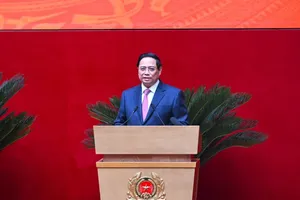
A review of the special directives that guided the Spratly Islands liberation campaign, documented in the book of the Central Military Commission - the Ministry of National Defense named “Some Guiding Documents for the General Offensive and Uprising in the Ho Chi Minh Campaign in Spring 1975” (People’s Army Publishing House, 2005), and examining them through the lens of today’s context, reveals the immense magnitude of those top-secret telegrams.
On March 30, 1975, the Central Military Commission cabled Chu Huy Man and Vo Chi Cong, issuing a clear mandate: “Pursuant to the Politburo’s directive, the Standing Committee assigns the Military Region Party Committee and B1 Command the task of urgently researching and directing execution, seizing the most opportune moment to capture the islands currently occupied by the Southern puppet army belonging to the Spratly Archipelago. Nguyen Ba Phat, an envoy from the General Staff, and accompanying Navy officers will be under the direction of the Military Region Party Committee and Command for plan implementation.”
Ten days later, on April 9, 1975, an urgent telegram from the Central Military Commission reached commanders Vo Chi Cong and Chu Huy Man (Military Region 5), and Hoang Huu Thai (Deputy Commander of the Navy). It instructed them to act promptly according to the predetermined plan to capture the Spratly Archipelago.
The directive warned that any delay risked foreign occupation, citing current foreign intentions to invade. This unequivocal command launched a lightning naval campaign. Three ships (673, 674, 675) of the 125th Naval Brigade, vessels legendary as the “numberless ships” of the Ho Chi Minh Trail at sea, departed from the Northeast sea area on this critical new mission. Their captains pushed their engines to full throttle, steering resolutely towards Da Nang City.
By 9:00 p.m. on April 10, 1975, all three ships docked at Tien Sa Port.
Immediately upon reaching Tien Sa Port, the three ships were swiftly tasked with transporting troops for the Spratly Islands liberation. This force included the 1st team of the 126th Naval Commando Brigade and a commando contingent from Division 2, commanded by Mai Nang.
Within a mere few hours, the troops assembled aboard and concealed securely below deck. From Tien Sa, under cover of night, ships 673, 674, and 675 were meticulously disguised as fishing vessels flying foreign flags. At 4:00 a.m. on April 11, 1975, these three “fishing boats”, code-named Formation C75, sailed towards the Spratly Islands, targeting Southwest Cay Island as the campaign’s opening objective.
On April 12, 1975, as Formation C75 navigated the open sea, a trailing foreign vessel and circling aircraft caused tense surveillance. Commander Mai Nang worried that the plan was exposed. He swiftly ordered a course alteration, feigning a heading towards Hainan (China). The crew maintained composure. After prolonged monitoring, the foreign assets disappeared. Immediately, the Formation accelerated directly towards the Spratly Islands, reaching predetermined coordinates by the afternoon of April 13.
Toward the dawn of April 14, 1975, on the immense sea, the three ships successively moved into position, poised for the inaugural assault on Southwest Cay island.
Around 1:00 a.m. on April 14, 1975, the 1st commando team, under the command of Team Leader Nguyen Ngoc Que, launched a three-pronged landing on Southwest Cay from ship 673. Ships 674 and 675 provided offshore support. Despite challenging waves delaying one group, all forces landed and at 4:30 a.m. simultaneously opened fire on the surprised enemy, who then regrouped to resist.
Major General Mai Nang recounted, “We loudly shouted about using strong firepower to demoralize the enemy hiding in bunkers.” (He later realized that this loud shouting by the troops significantly contributed to the rapid surrender of the Saigon army soldiers). Gunfire from the defensive positions gradually weakened, then ceased entirely. By approximately 5:30 a.m. on April 14, 1975, the Saigon soldiers on Southwest Cay island surrendered en masse.
The flag of the liberation army was raised, replacing the flag of the former regime. Corporal Le Xuan Phat, from Team 1 of the 126th Commando Brigade, had the honor of raising the national flag on Southwest Cay Island.
Following Southwest Cay Island’s liberation, enemy defenses in the Spratly Islands faltered. Ships swiftly transported troops to seize the remaining islands, including Sinh Ton Island, Nam Yet Island, Son Ca Island, Amboyna Cay, and Spratly Island. The campaign was executed with remarkable speed and precision. Ship 675 later secured Southwest Cay Island, safeguarding this first strategic achievement.
Following this event, higher command directed the campaign continue against remaining Spratly islands. At dawn on April 21, 1975, ship 641 sailed towards Son Ca Island, commanded by Do Viet Cuong, Deputy Team Leader of Brigade 126. Disguised as a fishing vessel, its identification numbers were continuously altered to avoid detection. En route, 641 encountered US military ships and aircraft, causing superiors to postpone the planned April 23 attack.
Precisely at 2:00 a.m. on April 25, 1975, the troops landed on Son Ca Island. By 2:30 a.m., all assault prongs simultaneously opened fire, and the enemy surrendered after just half an hour. The liberation flag soared over Son Ca Island.
On April 27, 1975, the troops liberated Nam Yet Island and Sinh Ton Island. Commander Mai Nang was assigned by superiors to remain on Nam Yet Island. On April 28, 1975, the troops liberated Spratly Island and Amboyna Cay, thus successfully completing the assigned mission within half a month through immense effort.
A vast, resource-rich sea area encompassing islands and archipelagos of paramount strategic importance had been secured under the Fatherland’s sovereignty.
